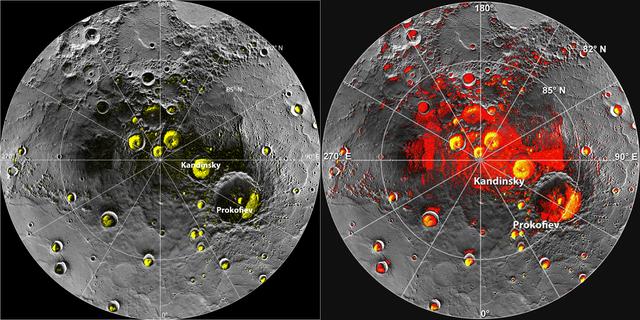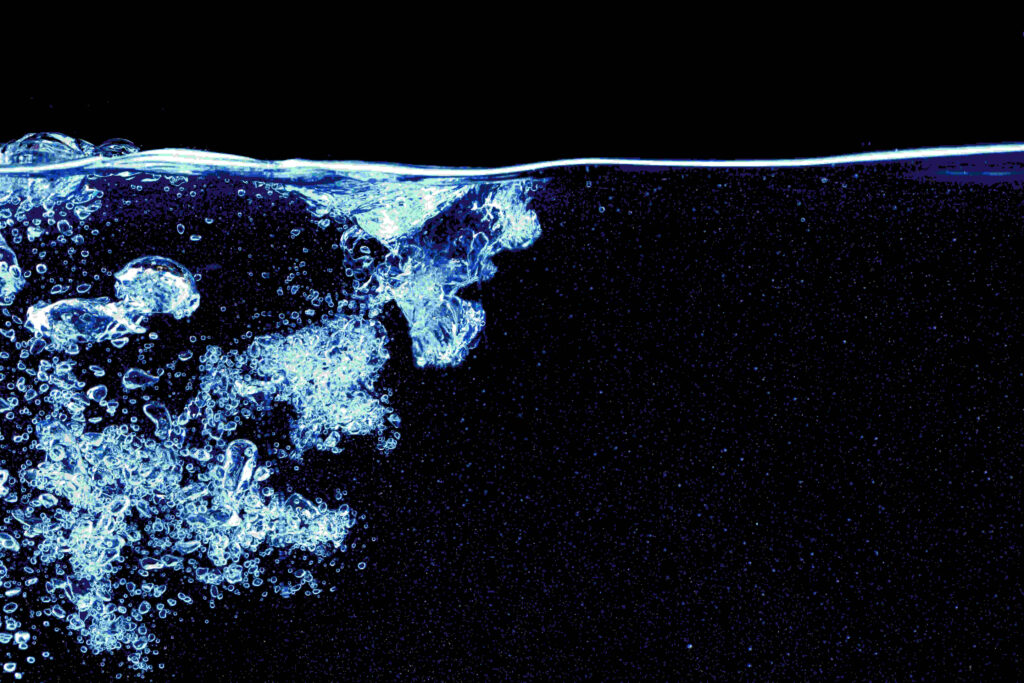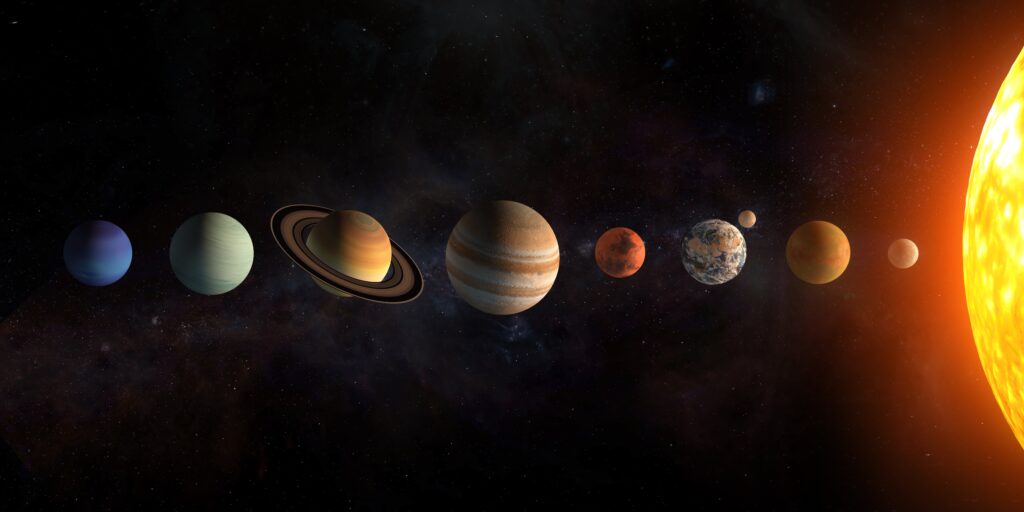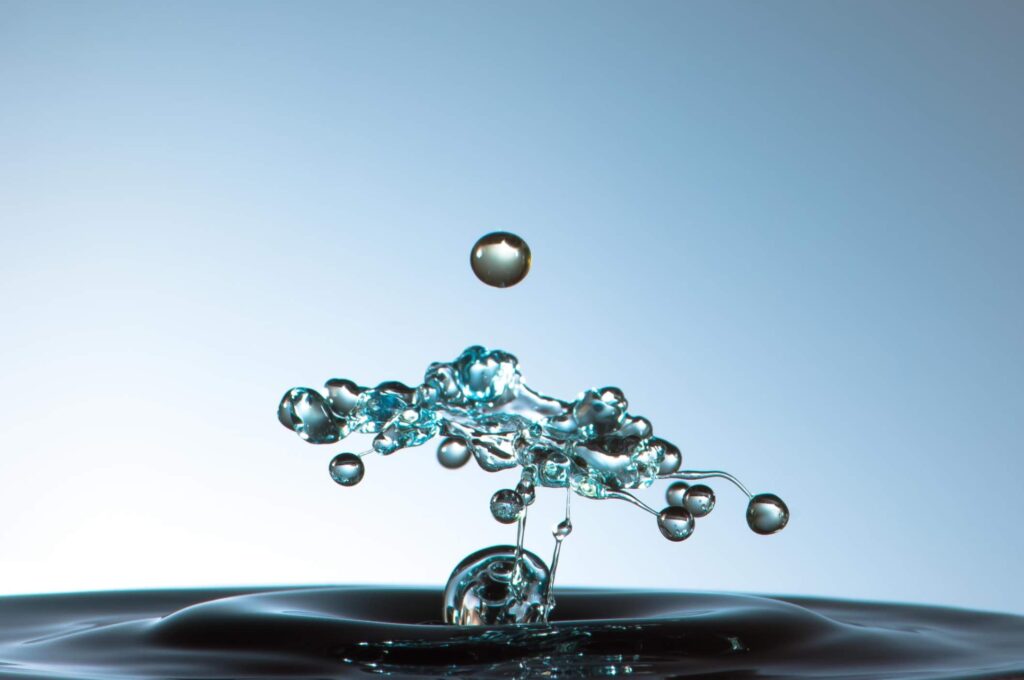Water – one of the essential substances for life and a crucial resource for future space exploration. While Earth is the only planet with stable surface liquid water, water in various forms is present throughout the solar system. It exists as ice, vapor, and even liquid water beneath the surfaces of several celestial bodies.
Understanding where water can be found and how it exists in space is crucial for future missions and the search for extraterrestrial life.
Water in Different Forms
First, let’s get over the basics. Water in the solar system exists in three primary forms:
Water Ice
Found in the frozen surfaces of moons, dwarf planets, and comets, water ice is the most common form of water in space. Ice deposits exist in permanently shadowed craters, in thick icy mantles, and on the polar caps of planets like Mars.
Some moons, such as Europa and Ganymede, have thick layers of ice covering potential subsurface oceans, while dwarf planets like Ceres contain significant ice deposits within their surfaces. This ice, depending on its location, can be buried deep below the surface or present in relatively shallow layers, accessible to future exploration.
Liquid Water
Despite the frigid conditions of space, liquid water is believed to exist in subsurface oceans beneath the icy crusts of several moons. The movement of these oceans is driven by internal heating caused by gravitational tidal forces or radioactive decay. Liquid water oceans may exist beneath Europa, Enceladus, Titan, and Ganymede, providing environments potentially suitable for extraterrestrial life.
These oceans may interact with rocky interiors, producing chemical reactions similar to those found in hydrothermal vents on Earth. In some cases, these interactions could lead to the formation of organic molecules, which are essential building blocks for life.
Water Vapor
Detected in thin atmospheres and plumes ejected from celestial bodies, water vapor provides evidence of active geological or cryovolcanic processes. Saturn’s moon Enceladus is known for its water vapor plumes, which erupt from cracks in its icy surface, potentially connected to an underground ocean.
Water vapor has also been observed in the upper atmosphere of gas giants like Jupiter, Saturn, Uranus, and Neptune, indicating their abundant water content. Some of these vapors could escape from deeper sources, revealing hidden reservoirs of water beneath planetary surfaces. Each of these forms presents unique opportunities for exploration and potential resource utilization.
Water in the Solar System
The inner solar system, despite its proximity to the Sun, still holds significant evidence of water in different forms. While surface liquid water is rare due to high temperatures and low atmospheric pressures, frozen and subsurface water deposits exist on multiple celestial bodies, offering insights into planetary history and future exploration potential.
The Moon

The Moon’s resource potential lies in frozen water in permanently shadowed craters at its poles. These ice layers could serve as critical resources for future lunar missions, providing a source of drinking water, fuel, and life-support systems. The study of lunar ice also helps scientists understand the origins of water in early planetary formation. Some areas of the Moon’s surface may also contain traces of water embedded in the soil due to interactions with the solar wind.
Mars
Mars once had bodies of water, including lakes and rivers, but today most of its water exists as water ice in its northern hemisphere and polar caps. Radar data suggest the presence of liquid water oceans beneath surface layers, though their stability remains debated.
Evidence of water vapor in the Martian atmosphere suggests that subsurface water may occasionally reach the surface through seasonal changes. Additionally, recent studies suggest that underground oceans might still exist in isolated pockets, potentially sustaining microbial ecosystems.
Venus
Venus, often called Earth’s twin due to its similar size and mass, may have once had significant amounts of water. However, due to an extreme greenhouse effect, Venus lost essentially all of its water vapor to space. High temperatures caused any water content to evaporate, and without a protective atmosphere, solar wind stripped away much of it.
Some scientists believe that Venus may have had bodies of water or even shallow liquid water oceans in its early history, but intense heat and atmospheric pressure made it impossible for water to persist on the surface. Today, traces of water vapour remain in Venus’s atmosphere, but the planet is far too dry to sustain liquid water.
Mercury

Despite being the closest planet to the Sun, Mercury surprisingly harbors frozen water in its northern hemisphere. The planet’s rocky surface experiences extreme temperature fluctuations, with daytime highs reaching over 400°C (750°F). However, some polar craters remain in permanent shadow, shielding any water ice from direct sunlight.
Observations suggest that these craters contain layers of ice, likely delivered by past comet impacts. While Mercury is an unlikely candidate for liquid water, the presence of frozen water demonstrates that even the hottest terrestrial planets can retain ice under the right conditions.
Giant Planets and Their Water Content
The giant gas planets of the solar system – Jupiter, Saturn, Uranus, and Neptune – contain vast amounts of water, though it is locked deep within their atmospheres and interiors. Water in these planets exists primarily in their upper atmosphere, where it contributes to auroral belts and atmospheric dynamics.
However, due to extreme temperatures and pressures, the water content of these planets remains difficult to study directly. Some models suggest that beneath their thick clouds, water may exist as supercritical fluids, which blur the line between liquid and gas states.
Dwarf Planets and Water Ice
Pluto, once classified as a planet, has an icy surface with possible evidence of an underground ocean beneath its frozen crust. Geological features suggest that past cryovolcanic activity may have brought liquid water to the surface in Pluto’s history.
Ceres, the closest asteroid in the asteroid belt, contains frozen water and could host subsurface water, making it a prime candidate for studying the origins of water in the solar system. Observations suggest that water vapor is occasionally released from Ceres, hinting at underground reservoirs that might still be active today.
Comets and the Kuiper Belt
Comets and Kuiper Belt objects are rich in water ice and organic molecules. These celestial bodies likely contributed to the delivery of water to the terrestrial planets through impacts. The study of comet composition helps scientists understand the presence of water in early planetary systems.
Asteroid Belt and Near-Earth Asteroids
Certain asteroids in the asteroid belt have resource potential. They contain traces of water ice, hinting at their role in delivering water to Earth and other rocky planets. The potential extraction of water ice from asteroids could be an essential step in space exploration, allowing for in-situ resource utilization to support long-term missions. Some rocky bodies may also contain hydrated minerals, which could be another source of extractable water.
Icy Moons and Their Hidden Oceans
Several moons in the solar system are believed to have subsurface oceans beneath their icy surfaces. These hidden liquid water layers may be key to understanding the possibility of extraterrestrial life. That’s why they are often referred to as “Ocean Worlds”.
Here are some of them:
- Europa (a Galilean moon of Jupiter) is one of the best candidates for a liquid ocean beneath its icy crust. Tidal forces from Jupiter generate heat, preventing the liquid water ocean from freezing completely. Scientists believe that interactions between the ocean and Europa’s rocky material could create chemical conditions suitable for life. The presence of hydrothermal vents on the ocean floor could provide heat and energy for potential microbial life.
- Ganymede, the largest moon in the solar system, also has a liquid water layer beneath its surface, potentially trapped between multiple layers of ice. Observations suggest that Ganymede’s internal oceans may be even deeper than Europa’s, making it a strong candidate for further study. It is thought that the water content within Ganymede could be distributed in several distinct layers, with alternating ice and liquid water sections.
- Callisto, another of Jupiter’s Galilean moons, has evidence suggesting the presence of subsurface water, though the extent remains uncertain. Its heavily cratered surface suggests that internal activity is minimal compared to Europa and Ganymede, meaning any liquid water would likely be deeply buried beneath the ice layer.
- Enceladus, a moon of Saturn, ejects water vapor into space through geysers originating from its internal oceans, which are thought to be heated by hydrothermal vents at its seafloor. These conditions resemble deep-sea environments on Earth where microbial life thrives, making Enceladus one of the most exciting candidates for astrobiological studies.
- Titan, Saturn’s largest moon, has an icy crust covering a deep liquid water ocean beneath its surface, mixed with organic compounds that could hint at the possibility of extraterrestrial life. Titan also has lakes and rivers of liquid methane on its surface, making it one of the most geologically diverse worlds in the solar system. The presence of organic molecules in its atmosphere adds another layer of intrigue to its habitability potential.
Water and the Future of Space Exploration

Water is a key resource for future space exploration and the development of human presence beyond Earth. We must investigate the abundance of water across the solar system, as it will shape how missions are planned and where human settlements could be established.
The potential to extract water ice from the Moon, Mars, and the asteroid belt could provide essential life support, drinking water, and even certain types of rocket fuel by splitting water into hydrogen and oxygen. The search for life is also directly linked to the presence of water, as subsurface liquid water oceans on icy moons may harbor microbial life in environments similar to hydrothermal vents on Earth.
Water as a Key to Extraterrestrial Life
The presence of liquid water is one of the strongest indicators that a celestial body might support extraterrestrial life. On Earth, nearly all life depends on bodies of water, from oceans to underground aquifers.
The discovery of subsurface water and liquid water oceans on moons like Europa, Enceladus, and Titan has fueled interest in exploring these worlds for signs of microbial life. Scientists believe that hydrothermal vents on the ocean floors of these moons could provide the necessary energy and organic molecules for life to thrive.
Here’s how water might support life beyond Earth:
- Europa’s Underground Ocean: A liquid ocean beneath Europa’s icy crust may interact with rocky material along fracture zones or volcanically active areas, allowing for chemical reactions that produce energy. This process is similar to hydrothermal vents on Earth, where life thrives in complete darkness.
- Enceladus’s Plumes: The presence of water vapor plumes ejected from Enceladus suggests that its internal oceans might contain organic compounds and the ingredients necessary for microbial life.
- Titan’s Unique Chemistry: While Titan’s icy surface hides a potential liquid ocean, its lakes of liquid methane and complex atmospheric organic molecules could provide a different chemical pathway for life.
Water and Space Mining: A Future Resource

Water isn’t just crucial for sustaining life – it’s also one of the most valuable resources for future space industries. Water ice deposits in the asteroid belt, icy moons, and polar craters of the Moon and Mars could be extracted and converted into fuel and drinking water for deep-space missions.
Potential Water Sources for Space Mining
Here are just a few places we could potentially use water from:
- The Moon’s Ice Deposits: The ice layer in polar craters on the Moon could be extracted to provide essential resources for future lunar colonies. This water could be purified for drinking, used in agriculture within lunar greenhouses, or split into hydrogen and oxygen to create rocket fuel through electrolysis. The Moon’s proximity to Earth makes it an ideal location for a fuel depot, enabling deeper space exploration missions by reducing the need to launch fuel from Earth.
- Mars’s Water Reserves: The water ice found beneath the surface of Mars could play a critical role in supporting human exploration and habitation. It could be used for drinking water, oxygen production, and agriculture, helping astronauts sustain long-term missions. Additionally, Mars’s water could be utilized in ISRU (in-situ resource utilization) strategies to produce methane fuel by combining hydrogen extracted from water with atmospheric carbon dioxide, enabling return trips to Earth or fueling further deep-space travel.
- Asteroids and Icy Moons: Certain asteroids in the asteroid belt and dwarf planets like Ceres contain significant amounts of frozen water, making them potential targets for water extraction in deep-space missions. This water could be converted into fuel depots along interplanetary routes, allowing spacecraft to refuel without returning to Earth. Additionally, icy moons like Europa and Enceladus, while difficult to access, could offer future missions valuable insights into water-rich environments and potential mining sites for both water and minerals.
Interestingly, some of the locations rich in abundant water might also be key sites for space mining. The same hydrothermal vents that create conditions for microbial life also form mineral-rich deposits on Earth.
If similar hydrothermal systems exist beneath Europa or Enceladus, they might hold valuable mineral deposits, but getting to them is a whole different story. Any attempt to mine these resources would mean drilling through several kilometers of solid ice just to reach the ocean below.
And even then, we’d need to send machines all the way down to the seafloor, where crushing pressures and extreme conditions make deep-sea mining on Earth look almost easy in comparison. Realistically, with today’s technology, it’s just not possible.
Even in the future, it would still be far cheaper and more practical to extract these metals from Earth or other planets rather than attempting to mine them from these remote, ice-covered worlds.
Why Finding Water in Space Matters?

Water isn’t just essential for life; it’s also the key to making long-term space exploration possible. If we can find and use water beyond Earth, future missions could rely on it for drinking, fuel, and even building materials instead of carrying everything from home.
Understanding where water exists also helps us piece together the history of planets and moons, and it brings us closer to answering one of humanity’s biggest questions: Are we alone? The answer is simple: the more we learn, the better prepared we’ll be for the next giant leap into the universe.